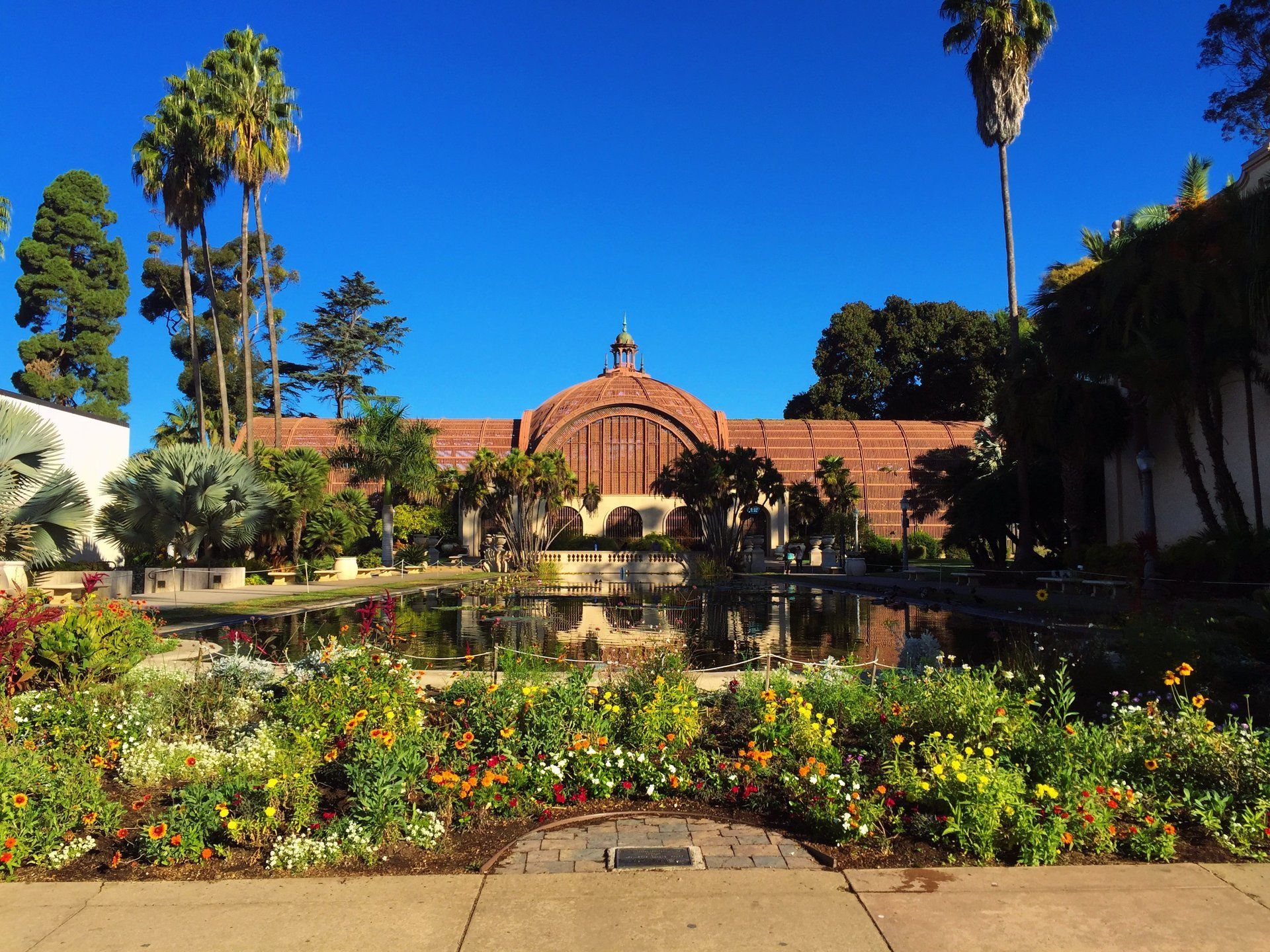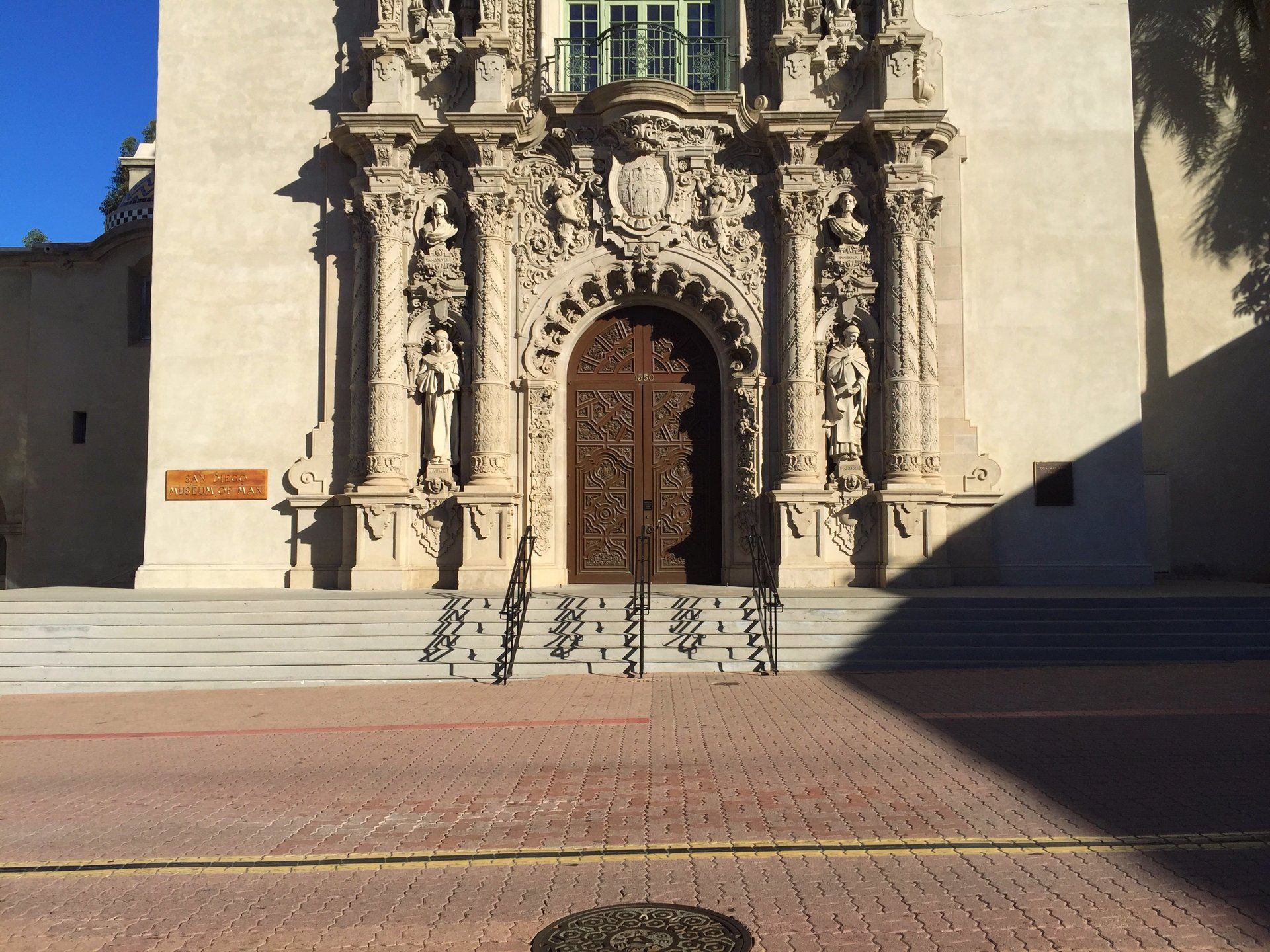
Balboa Park
Balboa Park
San Diego
Spanning more than 1,200 acres, Balboa Park
is the largest public park in the United States. With 16 museums, more than a dozen gardens, a handful of restaurants, three dog parks, several theaters, two pavilions, an 18-hole golf course, numerous trails and a nationally acclaimed zoo there is something for everyone. Whether you are visiting San Diego or have lived here for years, Balboa Park is a place you never stop exploring.



Slide title
Write your caption hereButton
Slide title
Write your caption hereButton
Slide title
Write your caption hereButton
Slide title
Write your caption hereButton
Slide title
Write your caption hereButton
Slide title
Write your caption hereButton
The San Diego Experience
The main entrance to the park is via the Cabrillo Bridge and through the California Quadrangle. That entry is currently a two-lane road providing vehicle access to the park, but there are also several bus routes that can take you into Balboa Park as well. El Prado, a long, wide promenade and boulevard, runs through the park's center. Most of the buildings lining this street are in the Spanish Colonial Revival architecture style, a richly ornamented mixture of European Spanish architecture and the Spanish Colonial architecture of New Spain-Mexico. Along this boulevard are many of the park's museums and cultural attractions, including the San Diego Museum of Man, the San Diego Museum of Art, the Museum of Photographic Arts, the San Diego Art Institute, the San Diego Model Railroad Museum, the San Diego Natural History Museum, the San Diego History Center, the Reuben H. Fleet Science Center, and the Timken Museum of Art. Other features along El Prado include the Reflection Pond, the latticed Botanical Building, and the Bea Evenson Fountain. Next to the promenade are the San Diego Air & Space Museum and the San Diego Automotive Museum.
Theatrical and musical venues include the Spreckels Organ Pavilion, featuring one of the world's largest outdoor pipe organs; the Old Globe Theatre complex, which includes a replica of Shakespeare's Globe Theatre as well as an outdoor stage and a theatre in the round; and the Starlight Bowl – an outdoor amphitheatre. The Casa Del Prado Theater is the home of San Diego Junior Theatre, the country's oldest children's theatre program. The House of Pacific Relations International Cottages collected on El Prado offer free entertainment shows.
The Botanical Building was the largest wood lath structure in the world when it was built in 1915 for the Panama-California Exposition. It contains large specimen palms and other plants and sits next to a long reflecting pool on the El Prado side.
Park History
The park was first called City Park when it opened in 1868, but was renamed to Balboa Park after Vasco Núñez de Balboa for the 1915 Panama-California Exposition. In 1892 Kate Sessions offered to plant 100 trees a year in exchange of 32 acres of land to be used for her nursery. Many of the trees and plants that she originally planted are still in the park today.
The 1915-16 Panama-California Exposition commemorated the opening of the Panama Canal and provided a major impetus for the creation of the Park as it appears today —the first of two Expositions that created many 1915 Exposition Poster of the cultural institutions as well as the stunning architecture in the Park. Most of the arts organizations along Balboa Park's famous El Prado pedestrian walkway are housed in Spanish-Renaissance style buildings constructed for the 1915 Exposition. It was one of the first times that this highly ornamented, flamboyant architectural style had ever been used in the United States.